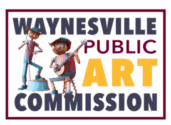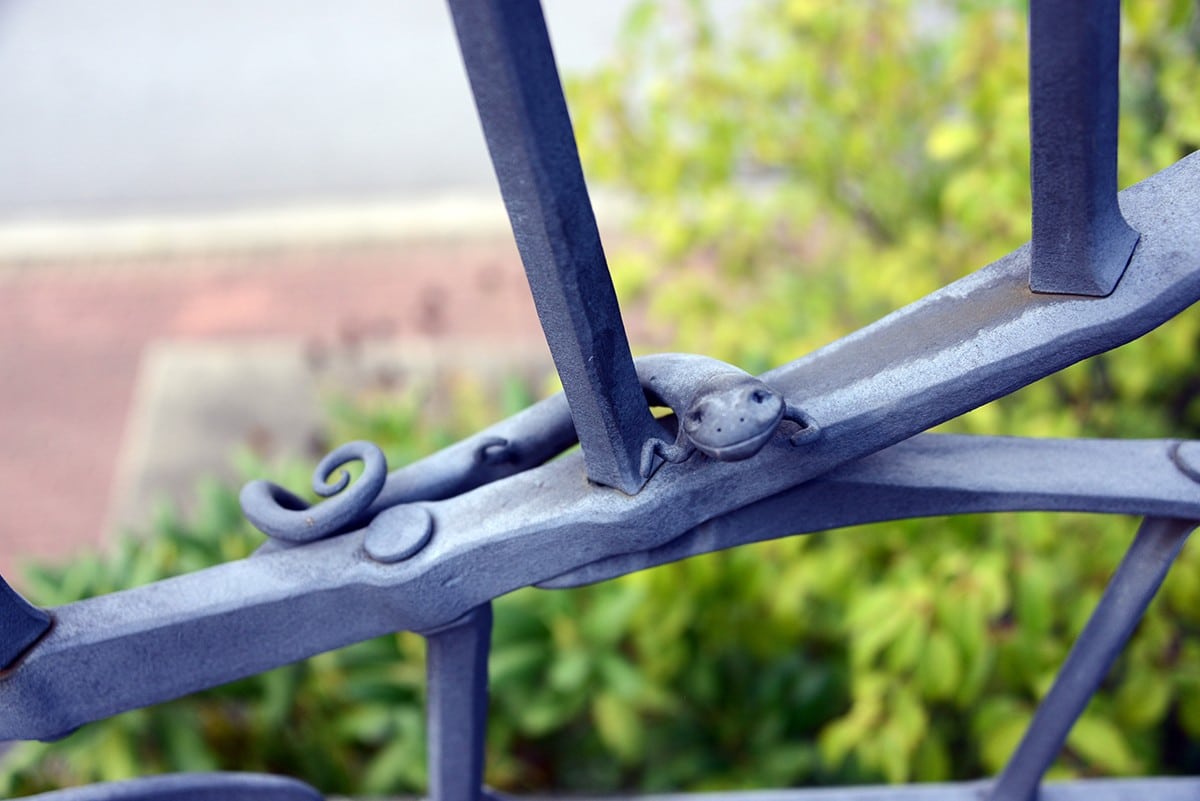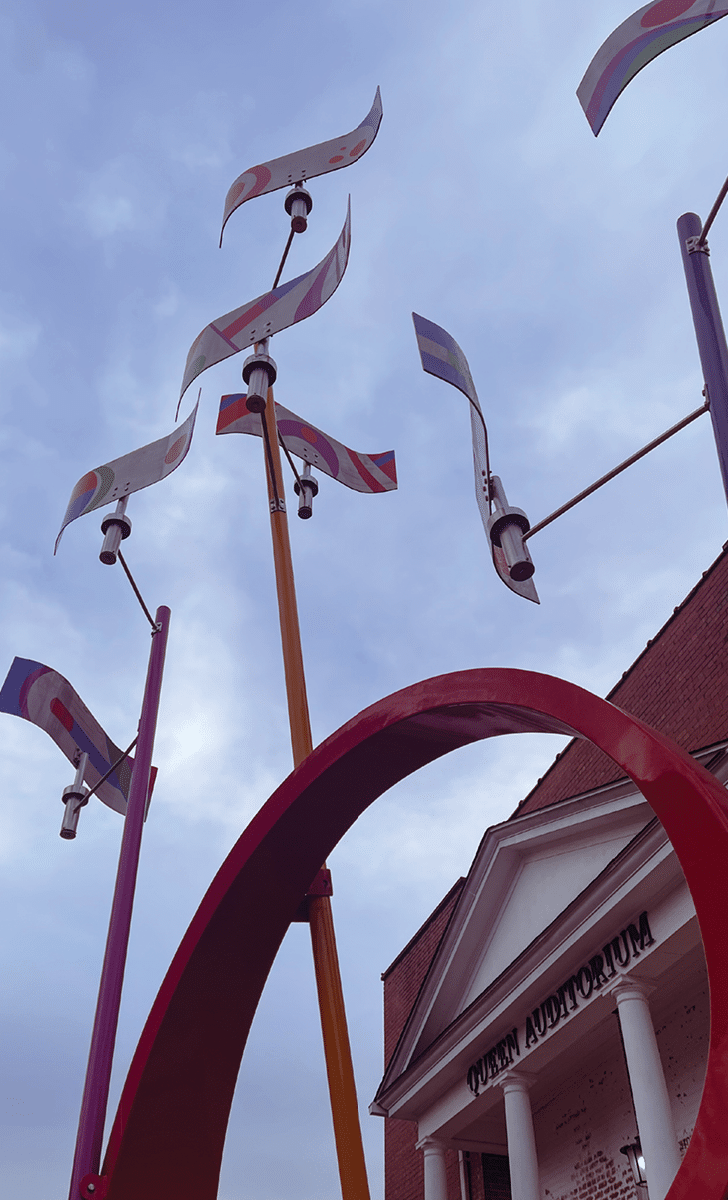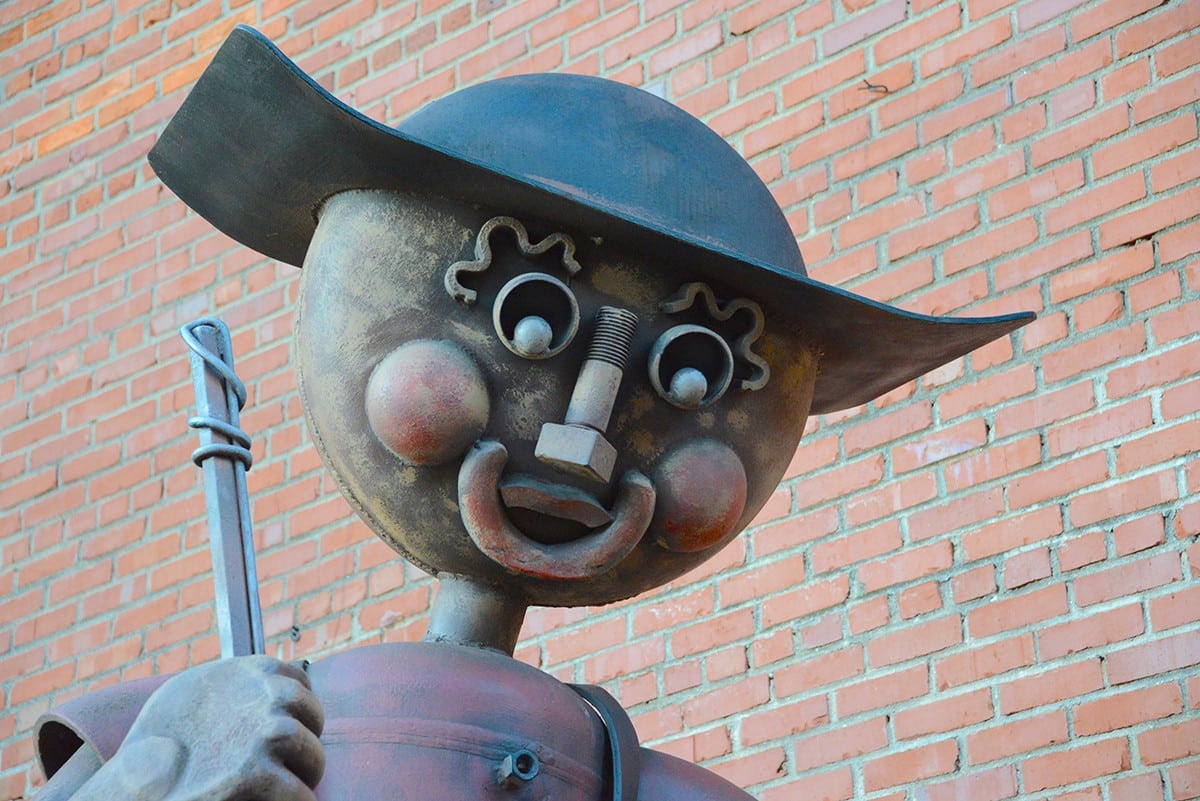More than a mural, this colorful tribute to the past, present and future of Waynesville’s historically African-American community envelops the Pigeon Community Multicultural Development Center. A journey through time unfolds from one vibrant scene to the next, conveying the recurring themes of cultural pride, generational bonds and inclusivity upheld by the Pigeon community.
The creation of the mural is itself a testament to the community fabric. Pigeon community members contributed concepts to mural artist Kristy McCarthy, who then enlisted volunteers armed with brushes to help bring the 60-foot-long and 12-foot-high mural to life.
The Pigeon Center’s origin story as a school for the Black community has come full-circle today, serving as both a youth and community center. Join us in exploring the touchstones and symbolism depicted by each element in the mural.
Starting at the far left, the mural pays homage to beloved teachers and educators of the Pigeon Street School — Miss Elsie J. Osborne, Mrs. Marion K. Howell, and Mr. James Bryant.
Providing a first-class education despite segregation was a source of pride for the Black community, witnessed by “Pigeon Street School” written in perfect cursive on a blackboard and children “wrapping the May Pole,” a cultural tradition on May Day. The original Rosenwald school house, dating to 1924, is seen in the background.
A juke joint called Gent’s Drive-In, and later June’s Drive-In, was a community gathering place prior to integration up until the 1970’s. Other landmarks include the steeple of Jones Temple AME Zion Church and the Babb and Craven street sign — marking a spot known as “The Holler,” where neighborhood children played until dark.
The elder reading to a child from “Lift Every Voice,” a two-volume series of African-American oral histories, portrays the passing of knowledge and culture through the generations. This middle section of the mural illustrates the present-day role of the Pigeon Community Multicultural Development Center, which houses youth after-school and summer programs. The stack of books are favorite titles from the center’s library promoting diversity and inclusivity.
The Pigeon Center’s logo in the background — the ancient African Adinkra symbol of Siamese crocodiles — represents unity across diversity. Sharing one belly depicts their mutual destiny and inclusiveness. A sweeping Cherokee pattern, pulled along by a pigeon, reminds us of the indigenous roots of the land. Throughout the mural, imagery evokes Western North Carolina’s natural beauty — from mountain ridges to wildflowers.
Continuing to the right, the final scenes envision a future of learning, inclusivity and abundance. The diverse group tending and harvesting the community garden symbolize reaping the bounty of shared labor. The children playing embody a promising future carrying on the legacy of the Pigeon Community.





















